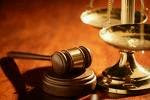
San Francisco Passes Cellphone Radiation Law
By JESSE McKINLEY
Published: June 15, 2010
SAN FRANCISCO — Imposing roughly the same cautionary standards for cellphones as for fatty food or sugary soda, this city — never shy about its opinions — voted on Tuesday to require all retailers to display the amount of radiation each phone emits.
A new law in San Francisco was hailed by Mayor Gavin Newsom as a major victory for cellphone shoppers' right to know.
The law — believed to be the first of its kind in the nation — came despite a lack of conclusive scientific evidence showing that the devices are dangerous, and amid opposition from the wireless telephone industry, which views the labeling ordinance as a potential business-killing precedent.
But the administration of Gavin Newsom, the city’s tech-happy mayor (he has more than 1.3 million followers on Twitter), called the vote a major victory for cell phone shoppers’ right to know.
“It’s information that’s out there if you’re willing to look hard enough,” said Tony Winnicker, a spokesman for Mr. Newsom. “And we think that for the consumer for whom this is an area of concern, it ought to be easier to find.”
Under the law, retailers will be required to post materials — in at least 11-point type — next to phones, listing their specific absorption rate, which is the amount of radio waves absorbed into the cellphone user’s body tissue. These so-called SAR rates can vary from phone to phone, but all phones sold in the United States must have a SAR rate no greater than 1.6 watts per kilogram, according to the Federal Communications Commission, which regulates the $190 billion wireless industry.
But John Walls, a spokesman for C.T.I.A. - The Wireless Association, a trade group, said that forcing retailers to highlight that information might actually confuse consumers into thinking “some phones are safer than others.”
“We believe there is an overwhelming consensus of scientific belief that there is no adverse health effect by using wireless devices,” Mr. Walls said, “and this kind of labeling gets away from what the F.C.C.’s standard actually represents.”
San Francisco, whose health- and eco-conscious residents already face mandatory composting and a ban on plastic bags, is not the first place to consider putting notices on cellphones. Earlier this month, the California Senate voted down an even more wide-ranging labeling bill. A bill in Maine that would have required warning labels on cellphones like those on cigarettes was defeated in March.
Part of that legislative track record may stem from the fact that there is little conclusive proof that cellular devices are hazardous. Both the National Cancer Institute and the F.C.C. say that there is no scientific evidence that wireless phones are dangerous, but each agency continues to monitor continuing medical studies.
A major study of cellphone use in 13 countries published online last month in the International Journal of Epidemiology found no increased risk for the two most common types of brain tumors, according to the cancer institute. In the most extreme cellphone users, there was a small increase in a type of cancer that attacks the cells that surround nerve cells, though researchers found that finding inconclusive.
In San Francisco, officials were cautioning that the law was not meant to discourage cellphone use, or sales, rather merely to inform consumers.
“This is not about telling people not to use cellphones,” said Mr. Winnicker. “Nobody loves his iPhone more than Mayor Newsom.”
Malia Wollan contributed reporting
http://www.nytimes.com/2010/06/16/us/16cell.html?partner=rss&emc=rss










No comments:
Post a Comment